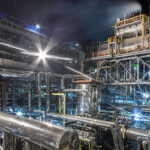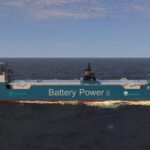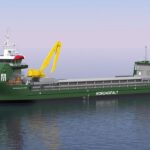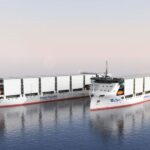Energy News Beat
US-based researchers are working on speeding up the process of identifying metal-organic framework materials (MOFs) that are suitable for carbon capture and storage.
MOFs are porous materials that can selectively absorb carbon dioxide and have three kinds of building blocks in their molecules—inorganic nodes, organic nodes, and organic linkers. These can be arranged in different relative positions and configurations. As a result, there are countless potential MOF configurations for scientists to design and test.
To quickly determine which configurations work, the scientific team comprised of researchers from the US Department of Energy’s Argonne National Laboratory, the University of Illinois Urbana-Champaign (UIUC), the University of Illinois at Chicago, and the University of Chicago, is using generative artificial intelligence (AI) to dream up previously unknown building block candidates.
They are also testing a form of AI called machine learning and a third pathway that is high-throughput screening of candidate materials. The last is theory-based simulations using a method called molecular dynamics.
By exploring the MOF design space with generative AI, the team was able to quickly assemble, building block by building block, over 120,000 new MOF candidates within 30 minutes. They ran these calculations on the Polaris supercomputer at the Argonne Leadership Computing Facility (ALCF).
They then turned to the Delta supercomputer at UIUC to carry out time-intensive molecular dynamics simulations using only the most promising candidates. The goal is to screen them for stability, chemical properties, and capacity for carbon capture. Delta is a joint effort of Illinois and its National Center for Supercomputing Applications.
The team’s approach could ultimately allow scientists to synthesize just the very best MOF contenders.
“People have been thinking about MOFs for at least two decades,” Argonne computational scientist Eliu Huerta said in a media statement. “The traditional methods have typically involved experimental synthesis and computational modeling with molecular dynamics simulations. But trying to survey the vast MOF landscape in this way is just impractical.”
A supercomputer may provide the answer
Even more advanced computing will soon be available for the team to employ. With the power of the ALCF’s Aurora exascale supercomputer, scientists could survey billions of MOF candidates at once, including many that have never even been proposed before. What’s more, the team is taking chemical inspiration from past work on molecular design to discover new ways in which the different building blocks of a MOF could fit together.
“We wanted to add new flavors to the MOFs that we were designing,” Huerta said. “We needed new ingredients for the AI recipe.”
The group’s algorithm can make improvements to MOFs for carbon capture by learning chemistry from biophysics, physiology and physical chemistry experimental datasets that have not been considered for MOF design before.
To Huerta, looking beyond traditional approaches holds the promise of a transformative MOF material—one that could be good at carbon capture, cost-effective, and easy to produce.
“We are now connecting generative AI, high-throughput screening, molecular dynamics, and Monte Carlo simulations into a standalone workflow,” Huerta said. “This workflow incorporates online learning using past experimental and computational research to accelerate and improve the precision of AI to create new MOFs.”
The atom-by-atom approach to MOF design enabled by AI will allow scientists to have what Argonne senior scientist Ian Foster called a “wider lens” on these kinds of porous structures.
“Work is being done so that, for the new AI-assembled MOFs that are being predicted, we incorporate insights from autonomous labs to experimentally validate their ability to be synthesized and capacity to capture carbon,” Foster said. “With the model fine-tuned, our predictions are just going to get better and better.”
ENB Top News
ENB
Energy Dashboard
ENB Podcast
ENB Substack
The post AI to help determine best carbon capture material appeared first on Energy News Beat.








